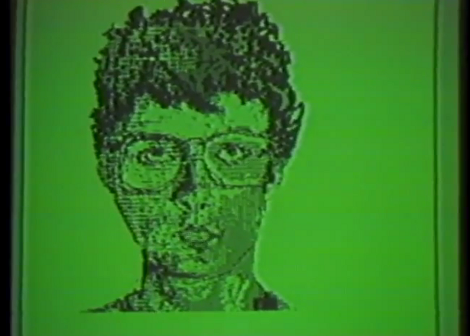
We normally try to be descriptive with our titles. But when that statement pops out of the narration with notable excitement it made us chuckle. This installment of Retrotechtacular is a promotional video for the Blit. It’s a graphics-based hardware terminal for Unix systems. It’s biggest boast is the ability to run (and display on screen) several different programs at once — an activity called multiprogramming. But there is also the “digitizing mouse”. On board is a 68000 microcprocessor 256k of RAM (they call it a quarter meg), and connects via RS232. The screen is 800 by 1024; that’s right, it’s a portrait orientation.
Notable in this episode are some classic eyeglass frames, and rad synthesizer sounds for scene transitions. Whatever happened to videography technique that uses a dimwitted companion to ask that all-knowing narrator stupid questions?
[Thanks John]














Quote of the day:
“I’ve always been able to think about several things at once, but the terminal stood in the way. Through the combination of Graphics and Unix, the Blit has given me access to the power of Multiprogramming! It’s the only terminal that lets people multiprogram.”
I love the screen orientation. The whole setup seems very similar to the xerox parc gui system.
Always interesting to see how far we’ve come and how much remains the same. Must have been very heady to suddenly have a roomful of terminals on your desk. Rob Pike was a true innovator.
I had a terminal from that family (an AT&T 5620 Graphics Terminal) and it was a trip. One of the demos that came with it was a file you could cat to the terminal that used a special terminal code to dump data to an off-screen piece of frame buffer. It dumped some sprites and a short program, and then a terminal code to jump to that program.
At that point, you could play space invaders on the terminal (even if you unhooked it from the computer). It was the perfect companion to the AT&T 3B2/310 small office server.
Not surprisingly, the BLIT was not Unix-specific – it was just a terminal that your could push stuff to (and get stuff from) over an RS-232 link. I suspect the video has a Unix flavor because the BLIT (like Unix) was an AT&T product. We had ours hooked up to various TENEX and TOPS-20 machines. Also, the phosphor on ours was white, so we could get nice black on white text (and graphics). You could push down custom fonts as well as doing (simple) graphics. It was pretty cool for its time. Expensive when compared to a conventional VT100 clone, though.
Just can’t get enough of that sweet synth music.
loved the narrator mentioning the “small board” …
The digitizing mouse fits comfortably in your hand… if your hand has three fingers like Mickey or Minnie.
The mouse that came with the Blit or its successors was the most comfortable one I’ve ever used. The buttons were on the front, not the top, so your hand was in a much more relaxed and natural position. Your thumb gripped on side, three fingers for buttons, little finger bracing the other side.
I didn’t use the original Blit, but I used its successors, including the green one with the 32-bit Western Electric processor and the amber one with the 680×0 (I think it was 68010?) Mandelbrot sets became popular when that terminal was around, so I wrote a Mandelbrot generator for it, which took about a week to fill the screen. The chip didn’t have floating point, so I was doing fixed-point register arithmetic, and you had to play some games to make sure you kept all the instructions in 32-bit, since the 68000 and 68010 did a hybrid 32/16-bit thing.
All mice have three buttons. The other two fingers allow you to hold this mouse.
It’s amazing what you can accomplish without buckets of bloatware. To think they did all this with very little system resources.
Just think, if they kept up with it, we’d all be looking forward to Layers 8 being released this Fall.
i hope to do this with the rasberry pi. thought i may accidentaly create program that zap’s me with my xbox kinect and im forced to play video games on the grid.
ho wait thats hmm?
This beastie needs an RS-232 serial port… :-)
Pew Pew… meanwhile the compiler cannot recover.
http://youtu.be/qwIAjB99ucw?t=2m15s
Well that’s not what I wanted at all. I just wanted a link to queue the video at 2m15s